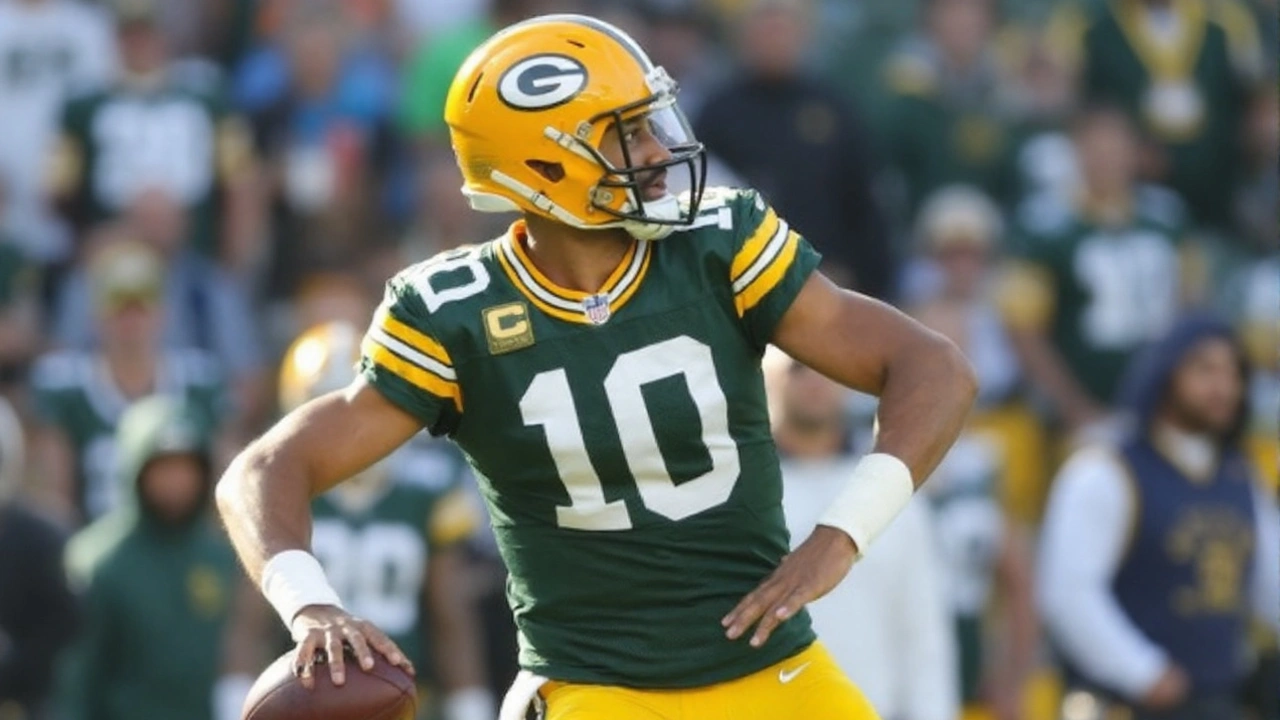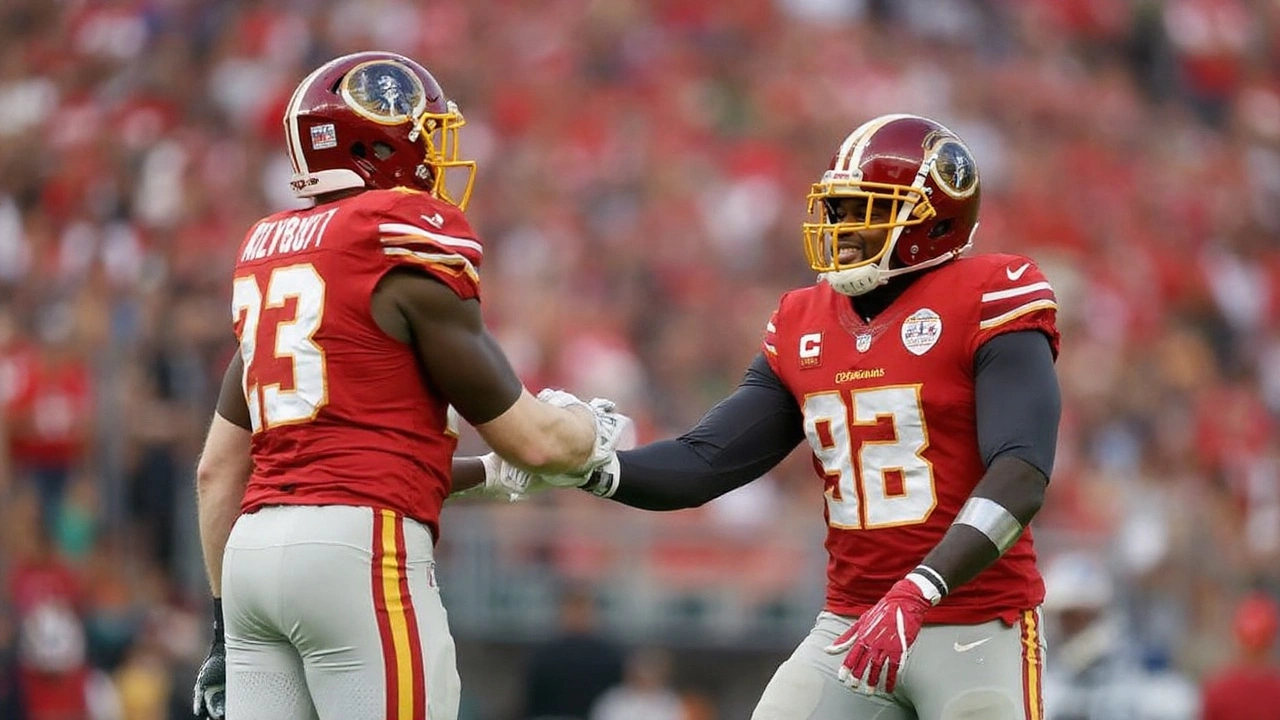Lines moved fast, and the market picked a side
For a Week 2 primetime game, the line moved like it had somewhere to be. Green Bay went from near equals with Washington in the summer to a 3.5-point favorite by kickoff at Lambeau Field on September 11, 2025. Moneylines reflected the shift: Packers -180, Commanders +150. Totals settled between 48.5 and 49.5 depending on the book, tying the highest over/under on the board for Week 2.
Both teams entered 1-0. Washington handled the Giants. Green Bay stifled the Lions. Those results mattered, but the number looked like a classic Week 1 overreaction. The Packers had been efficient out of the gate, yet there were real caveats: a low-volume offense under Matt LaFleur, the likely absence of Christian Watson, and a conservative fourth-down posture that can cap scoring bursts. That stuff limits ceiling even when the quarterback plays clean.
Washington brought a different shape. With rookie Jayden Daniels, the Commanders want to sustain drives, control tempo, and lean on structure. Last season they pushed pace near the top of the league and kept that throttle open in Week 1. That style can force defenses to cover more plays, which in turn drags opponents into longer possession counts. For bettors, that raises a simple question: do you trust steady volume over explosive edges? The market largely did.
Totals handicapping never aligned this week. Some sharp voices leaned under at 47–48, anticipating early-script jitters and a measured start from both offenses. Others argued the opposite: Washington’s tempo plus Green Bay’s scripted passing could push the game into the low 50s. The books told you how conflicted they were by hanging one of the highest totals of the week and letting it breathe rather than forcing it down.
Trend hunters had ammo on both sides. Washington had skidded to 0-3 against the spread in its last three road games. The Packers were 4-1 ATS in their prior five as home favorites. Trends don’t decide matchups, but they do shape risk tolerance in a market already leaning toward offense. It also didn’t hurt that Green Bay’s futures price jumped to +800 to win the Super Bowl after Week 1, fourth-shortest on the board at several books. Momentum sells.
Pre-kickoff, the betting picture looked like this:
- Spread: Packers -3.5 at most shops, -3 available earlier in the week.
- Total: 48.5 to 49.5, among the highest for Week 2.
- Moneyline: Packers -180, Commanders +150.
- Public angle: markets tilted toward offense, reflecting trust in sustained drives and quarterback efficiency.
Game state mattered more than usual here. If Washington extended possessions and protected Daniels, Green Bay’s offense would have to trade answers rather than sit on the ball. If the Packers controlled the trenches and leaned on early downs, Washington’s pace could become empty calories. That push-pull framed every bet on the board.

Player props, parlay talk, and why one number stood out
The prop market produced one clear headliner: Jordan Love’s completions. Books hung 19.5 with +125 on the over. Independent models had him projected at 21.48 completions. That’s not a small gap. At +125, the break-even probability is about 44.4%. A 59% projection creates a meaningful edge and an expected return hovering around the mid-30s percentage-wise. That’s the rare case where price and projection meet in daylight.
Why might completions rise without a pure shootout? Two reasons. First, Green Bay’s script often opens with quick-game throws—high-percentage concepts that move chains without chasing explosives. Second, Washington’s pace can inflate play counts on both sides. You don’t need a fireworks show to get to 20 completions; you need time on task and a willingness to take what’s there.
Context helped, too. With Christian Watson uncertain, the Packers’ passing tree skews to intermediate and underneath targets, which can be completion-friendly even if yards per attempt stay modest. Add a coaching staff that doesn’t mind settling for manageable third downs, and you get a game plan that feeds volume rather than splash plays.
Not every data point pointed to the over on the total, though. Analysts who leaned under worried about early nerves for Daniels in a loud road environment and a Green Bay staff comfortable playing field position. They also flagged LaFleur’s fourth-down caution as a drag on touchdown variance. Fewer aggressive calls near midfield can convert potential sevens into threes—or punts—keeping totals in check.
Still, the market’s posture stayed optimistic. When the same matchup triggers disagreement on the total, individual props often become the cleaner bet. Love’s completions fit that bill: independent from red-zone variance, connected to pace, and insulated from single-play randomness.
One popular ticket linked everything together: a three-leg parlay of Packers -3, over 48, and Love over 19.5 completions at +540 (Fanatics). It’s a tidy storyline—favorite wins, game flows over, quarterback hits volume. But pros urged caution on bundling. Parlays stack correlation risk. Sure, a fast game can carry all three legs, but one unlucky turnover or a pair of stalled red-zone trips can torch your payout. The advice was simple: if you like all three, consider them as singles and let the edges work on their own.
For bettors who preferred to stay nimble, live markets offered angles without pregame commitment. If Washington sustained early drives without explosive plays, live total unders in the low 50s could appear. If Green Bay leaned pass early and Washington answered with pace, a live completions or attempts over would likely post a playable number even after a short adjustment. This matchup screamed “in-game window” because the first quarter would tell you who was dictating tempo.
Beyond Love, other props leaned on the same logic: short-area targets, sustained drives, and the tug-of-war between pace and efficiency. While the article’s core recommendation centered on Love’s completions, the broader idea was to find bets that didn’t require perfect red-zone luck. Receptions and attempts fit better than long-yardage ladders when you expect long possessions and mixed finishes.
So what actually happened? The game rewarded that setup. Both quarterbacks handled the stage, and the scoreboard kept moving enough to push the total over in most markets. Several of the highlighted angles cashed, validating the idea that volume and tempo—not just explosives—would define the night. If you followed the model edge on Love’s volume or avoided over-stacking correlated legs, you likely felt the difference between a good read and a lucky bounce.
There’s a larger lesson tucked inside this one. Early-season markets can be brittle. One strong Week 1 can turn a near pick’em into a field-goal-and-a-hook favorite by Thursday. That doesn’t mean the move is wrong; it means you should ask why. In this case, Green Bay’s futures heat and home-field bump met Washington’s pace and a rookie quarterback. The undercard—completions, receptions, attempts—offered cleaner paths to profit than guessing whether fourth-down aggression would show up.
Here’s the snapshot bettors worked from before kickoff and can carry forward into similar matchups:
- When totals are high because of tempo, look for props tied to play count rather than red-zone perfection.
- Plus-money overs on volume stats deserve a second look if projections clear the number by a full completion or more.
- Be careful with correlated parlays; they feel right until one leg breaks the chain.
- Trends like ATS records can guide risk, but they shouldn’t overrule matchup logic.
By the time the lights dimmed at Lambeau, the market’s lean toward offense had plenty of support. The number movement that started with preseason parity and ended at Packers -3.5 told a story about confidence. The total near 49 told a story about pace. And the prop board—especially that 19.5 completions tag—told a story about where the real edges were.
On nights like this, the game often answers the simplest question: did price meet projection? For the bets that did, the value was obvious. For the ones that didn’t, the read wasn’t far off. That’s the difference between guessing and grinding through a matchup until something like Packers vs Commanders turns from a headline into a number you can trust.



